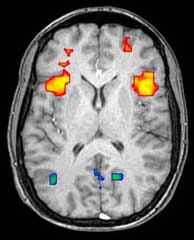I am a "queen" of small groups. I believe in them---been using them for reading and math, and have been doing some form of small group teaching for many years now. But this year, I'm at a crossroads. We have a new schedule, which is fabulous for math and my other subjects. I have a dedicated time for tier 2 reading and tier 2 math every day and no longer have to worry about teaching science OR social studies--I can do BOTH! (see this post from last January:
The Content Conundrum) However, my Language Arts block has been decreased, which means I no longer have an enormous block of time for reading, language, spelling, and writing. Whereas I used to have about 2 1/2 hours for LA, this year I have less than 2 hours (including my dedicated tier 2 time). That's about 50 minutes less than I had before, giving me about 60 minutes for Reading and the rest of the time for everything else, which presents quite a problem...How in the world do I fit in whole group instruction, and meet with 3 small groups in reading every day in about 60 minutes?
Oh, believe me, I gave it the old college try: 15 minute whole group reading lesson, then 3 15 minute small group rotations, but let's get real--by the time everyone is settled from the transition and actually on task we're dealing with about 10-12 minutes in a small group or doing an independent "choice". (We do
daily 5 in my room). And my kids are very good workers. They really try to transition quickly and get started right away and stay on task, but 10 minutes? Is that really enough time to get things accomplished? To get into a good book? To add something valuable to a written piece? To discuss reading with a partner or dig into an extension project?
I've really struggled with this and its caused me to question my whole reading organization. Are small groups every "15" minutes really the answer? In my room this year and with my time constraints I think the answer is "Not for every child."
So, I've decided to start something new: It may actually sound a little old school, but old school doesn't necessarily equal antiquated or bad. Whole group will stay the same, but I won't be so strict about finishing in 10 or 15 minutes. I'll schedule some time in there for the kids to actually practice what I'm teaching them independently or with partners, so we're realistically looking at about 20 or 25 minutes. Then we'll have ONE small group/choice time. I'll give students one or two things that they must do before their choice (respond in writing or something similar), then I will meet with one group, maybe two if I have time, (or maybe even individuals) but I won't stress over it. After all, if the research is correct, only a small percentage of my students actually need to be retaught the whole group lesson in small groups. So why am I trying so hard to meet with everyone every day? Hopefully, we'll also have a little time at the end of our reading block to come back together and share learning.
Sounds a lot like Readers Workshop, huh? I'm really excited about doing it. I've used this method before, but its been a while. I think it will be better for everyone: students will have time to apply and practice what they've been taught, I will have enough time to meet with the kids who really need me, and the instructional time won't be chopped up into such tiny little pieces.
Test run next week...Hopefully all will go well!




